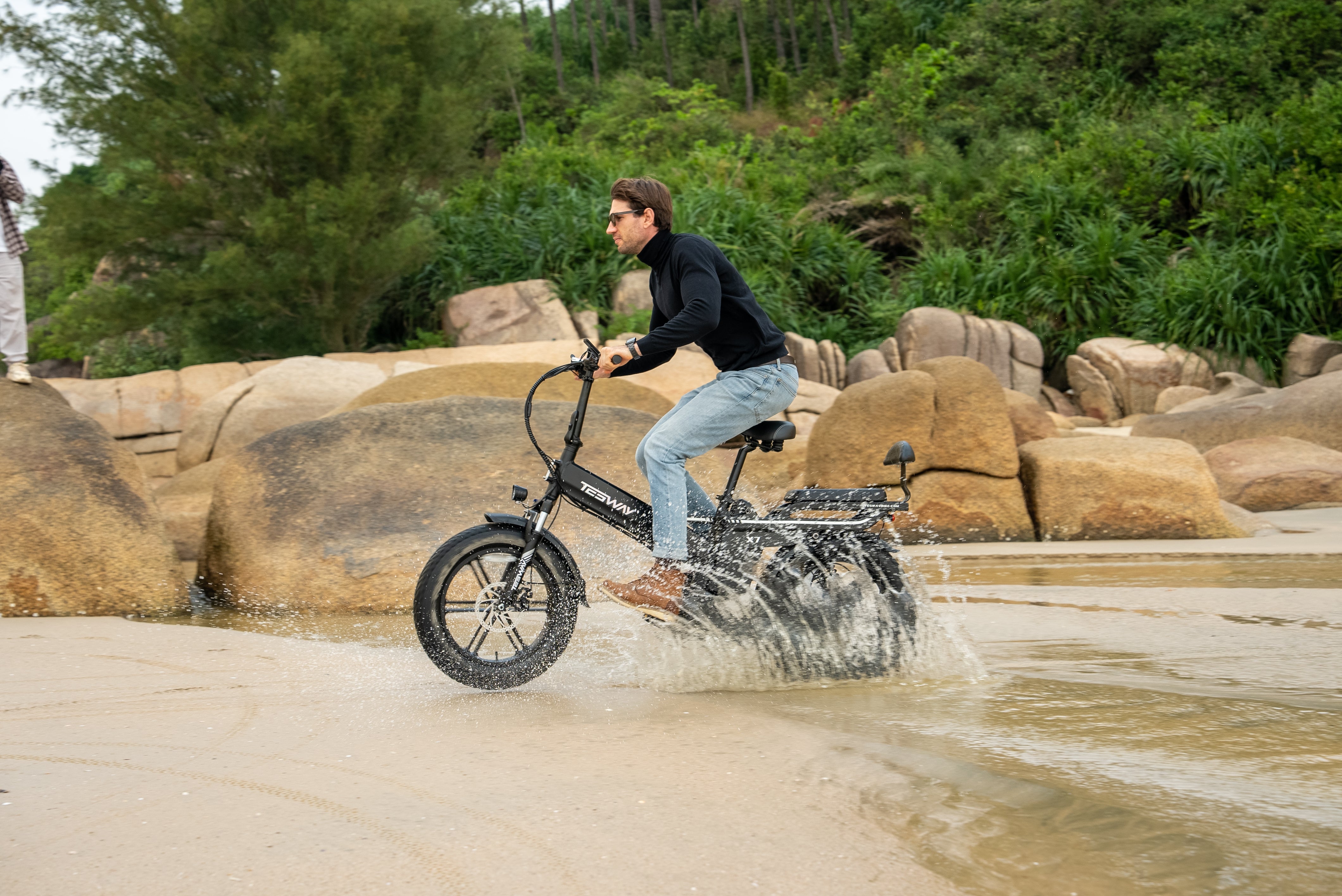Road bikes, sleek and efficient, have become synonymous with speed and endurance. These bicycles are designed primarily for traveling at speed on paved roads. The term "road bike" encompasses a wide variety of bicycles designed for various riding styles, from racing to long-distance touring. In recent years, the road electric bike has emerged as a revolutionary addition to the cycling world, blending traditional road biking with modern technology.
Road bikes are characterized by their lightweight frames, thin tires, and drop handlebars, allowing riders to achieve aerodynamic positions. The introduction of electric road bikes has further revolutionized the cycling experience, providing an extra boost through electric motors. These bikes cater to those who seek the thrill of road biking but require assistance on challenging terrains or longer rides.
The evolution from traditional road bikes to electric bikes signifies a significant leap in technology and convenience. Initially, road bikes were purely mechanical, relying solely on human power. With the advent of electric road bikes, cyclists can now enjoy extended rides with less physical strain, thanks to pedal-assist systems that provide varying levels of power support.

When Was the Road Bicycle Invented?
The history of road cycling is as fascinating as the sport itself. The first road bicycle, known as the draisine or dandy horse, was invented by Karl Drais in 1817. This early design lacked pedals and required riders to push themselves along using their feet. The invention of the pedal in the 1860s by Pierre Michaux and Pierre Lallement marked a significant milestone, transforming the draisine into a more practical and efficient mode of transportation.
Throughout the late 19th and early 20th centuries, road bicycles underwent numerous innovations. The introduction of chain drives, pneumatic tires, and multiple gears enhanced their performance and comfort. These advancements laid the groundwork for modern road bikes, making them faster, lighter, and more reliable.
The post-World War II era saw a surge in the popularity of road cycling, particularly in Europe. Countries like Italy, France, and Belgium became hubs for competitive road cycling, with iconic races such as the Tour de France gaining international acclaim. The evolution of road bicycles continued, with manufacturers experimenting with new materials like aluminum and carbon fiber to reduce weight and increase durability.

How Have Road Bikes Changed Over Time?
The transformation of road bikes over time is a testament to human ingenuity and technological advancement. From the rudimentary designs of the 19th century to the high-tech marvels of today, road bikes have evolved to meet the changing needs of cyclists. Modern road bikes boast advanced materials, precision engineering, and state-of-the-art components that enhance performance and comfort.
The most notable change in recent years is the advent of electric bikes. These bikes feature integrated electric motors that assist riders in pedaling, especially during climbs or long-distance rides. The introduction of lithium-ion batteries has made electric road bikes lighter and more efficient, providing longer ranges on a single charge.
Electric road bikes have opened up the sport to a broader audience, including older riders and those with physical limitations. The pedal-assist feature allows riders to tackle challenging routes with ease, promoting a more inclusive and enjoyable cycling experience. As technology continues to advance, electric road bikes are becoming more sophisticated, with features such as regenerative braking, integrated GPS, and smartphone connectivity.

The Bike Craze: From Past to Present
The bike craze is not a new phenomenon. In the late 19th and early 20th centuries, bicycles became a symbol of freedom and mobility. The mass production of bicycles made them accessible to the general public, leading to a surge in cycling popularity. This era saw the rise of cycling clubs, competitive races, and long-distance tours.
Fast forward to the 21st century, and we see a renewed interest in cycling, driven by concerns about health, fitness, and environmental sustainability. The advent of electric road bikes has further fueled this craze, offering a modern twist on a classic mode of transportation. Electric road bikes provide an eco-friendly alternative to cars, reducing carbon footprints and promoting a healthier lifestyle.
The current bike craze is characterized by a diverse range of cycling activities, from casual commuting to competitive racing. The versatility of road bikes, combined with the convenience of electric assistance, has made cycling more appealing to a wider audience. Cities around the world are investing in cycling infrastructure, recognizing the benefits of promoting cycling as a sustainable mode of transportation.
The Significance of Road Electric Bicycles
Road electric bicycles represent a significant innovation in the world of cycling. These bikes combine the speed and efficiency of traditional road bikes with the power and convenience of electric motors. The significance of electric road bikes extends beyond their technical features; they are reshaping the way people exercise,commute and interact with their environment. TESWAY, a leading e-bike brand in the US market, continually innovates its e-bikes. It is gradually becoming popular among many road trip enthusiasts, with the TESWAY X5 and X7 being their top favorites.
One of the primary benefits of electric road bikes is their ability to reduce physical exertion. The pedal-assist feature allows riders to travel longer distances without fatigue, making cycling accessible to a broader demographic. This is particularly beneficial for older adults or individuals with physical limitations, who might find traditional road cycling too strenuous.
Electric road bikes also promote sustainable transportation. By offering a viable alternative to cars for short to medium-distance travel, they help reduce traffic congestion and lower carbon emissions. In urban areas, where traffic and pollution are significant concerns, electric road bikes provide an efficient and eco-friendly solution.
Moreover, electric road bikes enhance the overall cycling experience. With features such as adjustable power settings, riders can customize their ride to match their fitness level and terrain. The integration of modern technology, such as GPS navigation and smartphone connectivity, adds a layer of convenience and safety to cycling.

What Should You Look for in a Road Bike?
Choosing the best entry-level road bike involves considering several factors to ensure it meets your needs and preferences.

How Do You Tell if a Road Bike is Too Big for You?
Ensuring your road bike fits properly is crucial for comfort and performance. A bike that is too big can lead to various issues, including discomfort, reduced control, and potential injury. Here are some indicators that your road bike might be too big:
- Reach: When seated on the bike, your arms should be slightly bent when holding the handlebars. If you have to fully extend your arms to reach the handlebars, the bike may be too large. This can cause strain on your shoulders, neck, and back during long rides.
-
Standover Height: When standing over the bike with both feet flat on the ground, there should be a few inches of clearance between the top tube and your crotch. If the clearance is too tight or nonexistent, the bike is likely too big for you.
-
Saddle Position: The saddle should be adjusted so that when you pedal, your leg has a slight bend at the bottom of the stroke. If you find yourself sliding forward on the saddle or feeling stretched out, the frame size may be too large.
- Handling: A bike that is too big can feel sluggish and difficult to maneuver. Pay attention to how the bike responds to your inputs. If it feels unwieldy or unstable, consider trying a smaller size.
- Comfort: Comfort is a key indicator of proper fit. If you experience discomfort or pain in your knees, hips, back, or neck, the bike's size and fit may need adjustment. A professional bike fitting can help address these issues and ensure you have a comfortable ride.
Proper bike fit enhances your cycling experience, making it more enjoyable and efficient.
Conclusion
From the bike's frame material and geometry to the quality of its components and overall fit, each aspect plays a crucial role in finding the right bike for you. As the cycling world continues to innovate, electric road bikes offer a modern solution that combines traditional cycling with advanced technology, making the sport more accessible and enjoyable
FAQs
Are electric road bikes environmentally friendly?
Yes, electric road bikes are environmentally friendly as they offer a sustainable alternative to cars for short to medium-distance commutes. They help reduce traffic congestion and lower carbon emissions, contributing to a healthier environment.
Can beginners ride electric road bikes?
Absolutely. Electric road bikes are ideal for beginners as they provide pedal assistance, making it easier to ride longer distances and tackle hills. This can help new riders build confidence and enjoy cycling without excessive physical strain.
Why is bike fit important?
Proper bike fit is crucial for comfort, efficiency, and injury prevention. An ill-fitting bike can cause discomfort, reduce control, and lead to injuries over time. Ensuring your bike fits well enhances your overall cycling experience.







Share:
Ideal Electric Bike Battery For Longer And Smoother Rides
What's The Best E-Bike Battery For Your Needs?